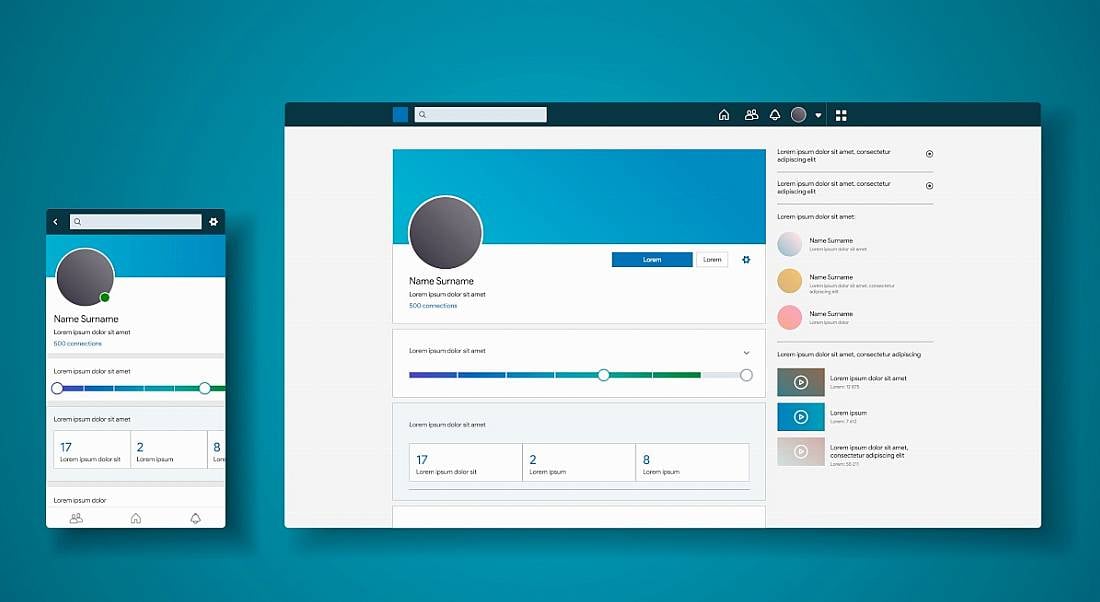Making your LinkedIn profile look appealing increases your chances of getting noticed by recruiters. Here’s how to do it.
While it is certainly possible to get hired without having a LinkedIn presence, your chances of being found by a recruiter or someone else in your industry are increased if you are on the professional networking site.
And, though it may be a bold claim to make, you may be better off having no LinkedIn profile at all than having an incomplete one or a badly put together one.
Like it or not, LinkedIn is becoming a key part of how we present ourselves to potential employers nowadays. In the online world, as in the real world, appearances are everything. This has nothing to do with what you look like, but everything to do with how you present yourself.
A good LinkedIn profile is the equivalent of putting on a presentable outfit and giving a good performance in the interview room.
Here are a few tips on how to go about building your LinkedIn profile.
Introduce yourself
Once you have signed up for LinkedIn and created your account, you should fill out the basics on your profile.
To do this, click on ‘Me’ to view your profile. On a computer screen, you’ll find this across the top menu of the site alongside your messages, jobs, search bar, network and notifications icons. Then click on ‘View profile’ to get editing.
You can update your profile description, name, profile image and cover image by clicking on the pen icons beside each section. We’ll look at choosing a profile image later on, but for now let’s focus on writing a good profile description.
This is the information that appears underneath your name. It’s also called the headline, which is a good way of thinking of it in terms of what you need it to do. Keep it short and simple: just put your job title and where you work.
Pick a good picture
A clear headshot of you against a plain background will do the trick. Think something with slightly more personality than a passport photo, but that still has an air of professional gravitas.
Also keep your image up to date. There’s no point in having a photo of yourself as a 21-year-old graduate if you’ve been working in your field for a few decades.
Similarly, don’t treat LinkedIn like a social media site. This is a place for professional networking – nobody wants to see a photo of you and a random friend on holidays in Fuerteventura in 2014.
Tell your story
Your LinkedIn profile is laid out to look like almost like a digital CV. Underneath the basic information, you’ll have the opportunity to add more detail about yourself and your previous work experience and professional interests.
Your ‘About’ section is where you can really let your individual skills and experience do the talking. Keep your language clear and avoid clichéd phrases; recruiters aren’t interested in your own assessment of yourself as ‘amazing‘ or ‘goals-orientated’, as these buzzwords mean little.
Instead, say who you are and what you have done or achieved. If you’re only starting out in your career, say what you want to achieve. Also, tell the world what you’re passionate about.
Don’t neglect your hobbies and interests
LinkedIn allows you to add lots of little details to your profile to help you stand out from the crowd. Take advantage of these.
For example, you can add your volunteer history for recruiters to see. This is definitely worth including alongside your previous work experience as it shows you’re a well-rounded person who cares about others.
Edit your custom URL
Even if you don’t apply for a job directly through LinkedIn, a lot of employers will want to know if you have a presence on the site. So, if you’re sending a CV when applying for a job, you should include the URL of your LinkedIn profile so an employer can check it out.
You can include a hyperlink underneath your other contact details at the top of your CV document.
Automatically generated LinkedIn URLs will typically look like this: https://www.linkedin.com/in/firstname-surname-123456789/.
A list of random numbers after your name looks a bit messy when printed on a CV. But you can easily edit your url to get rid of the numbers. To do this, click on ‘Edit public profile and URL’ at the top right-hand side of your profile. This will take you to a new tab where you can manually enter in your own personalised URL.
An example of how it could look would be: https://www.linkedin.com/in/yourname/.
Click save and you’re done.
Grow your network
When your profile is in good shape, you can start growing your professional network. As you begin following people relevant to your career interests, the site’s algorithm will keep suggesting others for you to follow and connect with.
You can follow hashtags also, such as #softwaredevelopment, to see posts relevant to these topics. The more you work on curating your feed in this way, the better LinkedIn will know you and suggest jobs, contacts and posts to you.
Post and comment wisely
We have already touched on the difference between LinkedIn, a professional networking website, and social platforms such as Facebook or Instagram.
When you choose to post about your achievements and the milestones you reach in your career, do it sparingly and wisely. There is no need to update your LinkedIn network every day. However, it is always good to let people know if you have taken a new job or if you have been promoted or recognised in a special way by your employer.
When commenting on other people’s posts, do so graciously. It’s okay to show your personality and share your opinions, but be careful too. Don’t post anything on LinkedIn that you wouldn’t be comfortable saying in a professional environment.
10 things you need to know direct to your inbox every weekday. Sign up for the Daily Brief, Silicon Republic’s digest of essential sci-tech news.




